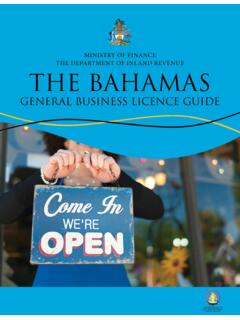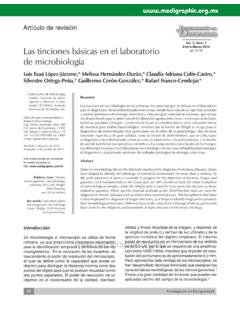Transcription of THE “GOOD HAIR” STUDY - Perception Institute
1 Textured hairstyles smooth hairstyles or or Pleasant Unpleasant When the items belong to a category on the left, press the E key. When the items belong to a category on the right, press the I key. THE GOOD HAIR STUDY : Alexis McGill Johnson Perception Institute EXPLICIT AND IMPLICIT Rachel D. Godsil Perception Institute Seton Hall University ATTITUDES TOWARD School of Law BLACK WOMEN'S HAIR. Jessica MacFarlane, MPH. Perception Institute Linda R. Tropp, February 2017 University of Massachusetts Amherst Phillip Atiba Goff, John Jay College of Criminal Justice THE GOOD. REPORT HAIR STUDY : AUTHORS. Explicit and Implicit Alexis McGill Johnson Attitudes Toward Black Women's Hair Executive Director, Perception Institute Rachel D. Godsil Director of Research, Perception Institute Eleanor Bontecou Professor of Law Seton Hall University School of Law Jessica MacFarlane, MPH. Research Associate, Perception Institute Linda R.
2 Tropp, Professor, Department of Psychological and Brain Sciences University of Massachusetts Amherst Phillip Atiba Goff, President, Center for Policing Equity Franklin A. Thomas Professor in Policing Equity John Jay College of Criminal Justice Perception Institute . Alexis McGill Johnson, Executive Director Rachel D. Godsil, Director of Research Jessica MacFarlane, Research Associate Research Advisors Joshua Aronson, New York University Emily Balcetis, New York University Matt Barreto, University of Washington DeAngelo Bester, Workers Center for Racial Justice Ludovic Blain, Progressive Era Project Sandra (Chap) Chapman, Little Red School House & Elizabeth Irwin High School Camille Charles, University of Pennsylvania Nilanjana Dasgupta, University of Massachusetts Amherst Jack Glaser, University of California, Berkeley Phillip Atiba Goff, John Jay College of Criminal Justice Kent Harber, Rutgers University at Newark Dushaw Hockett, SPACEs Jerry Kang, University of California, Los Angeles, School of Law Jason Okonofua, University of California, Berkeley john a.
3 Powell, University of California, Berkeley L. Song Richardson, University of California, Irvine College of Law Linda R. Tropp, University of Massachusetts Amherst Board of Directors john a. powell, Chair Connie Cagampang Heller Steven Menendian We wish to thank the Ford Foundation and the Kellogg Foundation for their generous support for our work, and for furthering a national conversation about equity. A special thank you to SheaMoisture for their inspiring work and contributions to The Good Hair STUDY , and to Dr. Emily Balcetis and New York University's SPAM Lab for their technical expertise and support of the Hair IAT. 2. THE GOOD HAIR STUDY : Explicit and Implicit Attitudes Toward Black Women's Hair This report presents preliminary findings from textured hair. Hair bias against natural or textured hair has the Good Hair STUDY , an original research STUDY a distinct impact on black women for whom textured hair conducted by Perception Institute in 2016 that is their normal.
4 To be clear, harms linked to racial bias examined attitudes toward black women's hair and against black women have been well documented in health created the first Hair Implicit Association Test (Hair care, policing, education, and the workplace. Increasingly, IAT) to measure implicit bias against textured hair as harms related to racialized gender bias are being examined well as an online survey to gauge explicit attitudes to understand why black women experience higher rates of about how natural textured hair is perceived. Bias has intimate partner violence, sexual prejudice, and fear isolation been shown to correlate with discriminatory behavior more than their white counterparts. such as rejection, avoidance, and abuse. As a result, Given what we know about other forms of bias, this the concern of this STUDY was to determine the risk of STUDY asks whether hair bias affects perceptions of beauty, discrimination against black women who wear their self-esteem, sense of professionalism, and by extension, hair naturally.
5 Workplace opportunities for those whose hairstyles fall outside of the dominant norm. Moreover, if hair bias is WHAT IS HAIR BIAS ? present, do black women who wear their hair naturally In April 2016, SheaMoisture brand launched the provocative perceive social stigma as it relates to their own hair choices Break the Walls campaign challenging the beauty and retail vis- -vis dominant norms? Last, amid a growing natural industries to address the aisle segregation' of hair products by hair movement among black women, can the science offer race. In most stores, hair products catering towards natural any solutions that can help reduce bias and promote positive and textured hair are often located in the ethnic section perceptions of natural hair, both for women themselves and while products designed for those with straight and smooth among others who see them? hair are often located in the beauty section.
6 Whether or not this product placement separation is a function of HOW DO WE MEASURE EXPLICIT AND IMPLICIT. intentional store policies or merely de facto' industry best HAIR BIAS? practices, Break the Walls charged that routine black hair Racial bias, or undue prejudice against a racial group, can care product placement away from the beauty' aisle confers, manifest as explicit bias, implicit bias, or as both explicit and at minimum, a subliminal message that naturally textured implicit bias. Explicit bias refers to the negative attitudes and hair is inferior, less desirable, and less beautiful. beliefs we have about a racial group, deliberately formed on Product placement is, of course, but one manifestation of a conscious level. Even in our current era in which explicit how hair standards are normalized within a larger culture bias against some groups, such as Muslims, is considered of beauty.
7 Powered by editorial, advertising, fashion, Holly- acceptable in some cases, openly anti-black racist comments wood, and social media, the beauty industry drives our visual continue to trigger widespread condemnation. Researchers, intake daily. Our perceptions stem largely from implicit however, are able to measure explicit bias through survey visual processes, and as a result, our brains' repeated expo- instruments and observation. sure to smooth and silky hair linked to beauty, popularity, Implicit bias refers to embedded negative stereotypes and wealth creates associations that smooth and silky hair is our brains automatically associate with a particular group the beauty default. Naturally textured hair of black women, of people. Implicit biases are often inconsistent with our by comparison, is notably absent within dominant cultural conscious beliefs. That is to say, we can simultaneously reject representation which automatically otherizes' those natural stereotypes and endorse egalitarian values on a conscious level images we do see at best they are exotic, counter cultural, and also hold negative associations about others or ourselves or trendy; more often than not, they are marginal.
8 Unconsciously. Implicit bias can affect our decisions and Inspired by the questions that Break the Walls raised, behavior toward people of other races and, therefore, lead Perception Institute set out to explore bias within the beauty to differential treatment. Implicit bias is frequently measured industry specifically to identify and break the mental by an Implicit Association Test (IAT) which assesses how walls' of hair bias negative stereotypes or attitudes that strongly we associate certain concepts such as race with manifest unconsciously or consciously, towards natural or stereotypes or attitudes by observing how quickly or slowly 1. THE GOOD HAIR STUDY : Explicit and Implicit Attitudes Toward Black Women's Hair people respond in a computer-administered categorization For black women, hair is deeply politicized. It has served as a task (Greenwald et al., 2009). While not a tool for assessing key marker of racial identification, a significant determinant individual behavior, the IAT has been shown to be a valu- of beauty, and a powerful visual cue for bias (Robinson, 2011.)
9 Able measure for assessing broad societal attitudes which have Arogundade, 2000). Tightly coiled hair texture is distinctly the potential for discriminatory impacts with very substan- tied to blackness and has been a marker of black racial identity tial societal significance (Greenwald, Banaji & Nosek, 2015). for centuries (Banks, 2000). It is simultaneously linked to Over the past year, studies have provided research support beauty norms (Craig, 2006). When beauty standards are for the notion that there is an explicit preference for smooth tied inextricably to race, black women experience a specific hair over natural hair (Rudman & McLean, 2016; Woolford et burden not experienced by either black men or women of al., 2016); however, researchers have yet to examine implicit other races (Robinson, 2011; Caldwell, 1991). To be clear, bias linked to hair. For the Good Hair STUDY , Perception women of other races and ethnicities who have curly Institute created the first natural Hair IAT and designed or textured hair may experience pressure to conform and conducted a national survey of women's experiences as to these beauty standards; but black women, in a linked to hair.
10 Our findings provide an important backdrop sense, are often pitted against them. to recent events related to natural hair from legal cases on For centuries, cultural norms have racialized beauty stan- the perceived professionalism of hairstyles to the appropriate- dards those with features characteristic of white European ness of hairstyles in school and have direct implications for ancestry are considered more attractive (Robinson, 2011;. future research and conversations related to black women's Craig, 2006; Goff, Thomas & Jackson, 2008). In the United experiences. While this preliminary STUDY presents a robust States, good hair is considered to be hair that is wavy or set of findings, Perception Institute will continue to collect straight in texture, soft to the touch, has the ability to grow data and analyze as the Hair IAT becomes publicly available long, and requires minimal intervention by way of treatments on our website.









